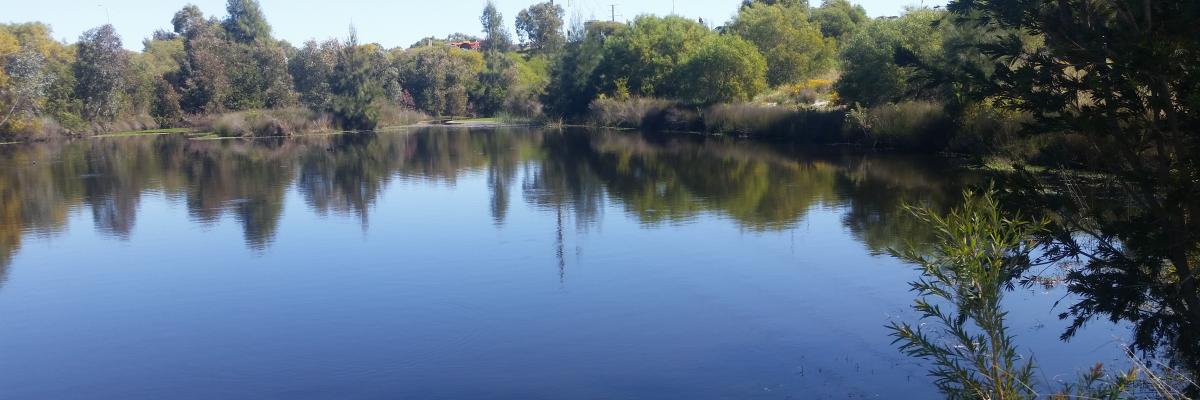
Tom Bateman Wetlands, Thornlie
- back
- About Us
- Employment
- News articles
- Council
- Strategies
- Policies and local laws
- News and publications
- Freedom of Information
- Customer service
- Misconduct and Fraud
- Tenders and Purchasing
- back
- Council
- Councillors
- Meetings
- Agenda and minutes
- Minutes Index
- Code of conduct
- Elections
- Executive team
- Useful links
- Councillor Training Report
- back
- News and publications
- Publications
- eNewsletters
- Media enquiries
- Gift register
- Councillor Disclosures
- Mayors Diary
- back
- Customer service
- Forms and guidelines
- Online payments and services
- Members of Parliament
- Justice of the Peace
- back
- About Our City
- Explore Gosnells
- History and heritage
- Major initiatives
- Places to Hire and Play
- Sustainability in Action
- Caring for our environment
- Business
- Stats and Facts
- Maps
- back
- History and heritage
- History of the City
- Community involvement
- Places of historic interest
- Benefits for heritage owners
- back
- Places to Hire and Play
- Walk and Cycle Paths
- Places to hire
- Impound Management Facility
- Courts for hire
- Community Sporting and Recreation Facilities Fund
- Parks and Spaces in your area
- Public Toilets
- back
- Your Property
- Community health
- In your street
- Track your application
- Occupying a building
- Copies of building plans
- Swimming pools and spas
- Rubbish and recycling
- Pets and animals
- Your City rates
- Fences and retaining walls
- Community safety
- back
- Community health
- Skin Penetration Establishments
- Hairdressing Establishments
- Food safety
- Stallholder/Trading Permit
- Pollution
- Safe water
- Pests
- Effluent Disposal
- Forms and Guidelines
- Public Buildings and Accommodation
- back
- In your street
- Verges
- Street trees
- Street lights
- Bus shelters
- Roads and paths
- Crossovers and driveways
- Signs and hoardings
- Use of City of Gosnells community advertising banner sites
- back
- Swimming pools and spas
- Swimming pool and spa approvals
- Pool security and inspections
- Drowning prevention
- back
- Pets and animals
- Cat registration
- Dog registration
- Dog control
- Dog exercise areas
- Cats - general information
- Stock control
- Wildlife
- Keeping bees, poultry, pigeons and farm animals
- back
- Your City rates
- What are local government rates?
- Additional charges
- Appealing your rates
- Pensioner or Senior concessions
- Emergency Services Levy
- Interim notices
- Change your address
- Payment methods
- Payment plans
- Request a free copy of your Rates Notice
- Direct debit request
- Rates - Cancel direct debit
- Register for eNotices
- back
- Fences and retaining walls
- Dividing fences (residential)
- Front and secondary street fences (residential)
- Electrified fences
- Retaining walls
- back
- Community safety
- Fire prevention
- Parking control
- Off-road vehicles
- Abandoned vehicles
- Litter and Illegal Dumping
- Rangers
- Safe City initiative
- Emergency management
- back
- Lifestyle
- City of Gosnells Children and Families
- Information for Community Groups and Sporting Clubs
- City of Gosnells Youth
- City of Gosnells Seniors 55+
- Get involved
- Leisure Activities
- Libraries
- Public notices
- Tourism Opportunities
- back
- Get involved
- Australian Citizenship
- Seniors
- Children
- People with disability
- Volunteering
- Community Development
- Community Directory
- Artist / Performer - Expression of Interest
- Community Funding Program
- Corporate sponsorship opportunities
- Awards
- Activity and entertainment provider’s expression of interest
- KidSport grants
- back
- Leisure Activities
- Major Events
- What's on in Gosnells
- Arts and culture
- Theatre - Don Russell Performing Arts Centre
- Fitness Groups
- Walking and Cycling
- back
- Libraries
- Library membership information
- Library resources
- Library services
- What's on at the library?
- back
- Building and Development
- Building and demolition work
- Online lodgement
- Engineering
- Planning the City
- back
- Building and demolition work
- Do I need a permit?
- Forms, fees and information sheets
- Building permits
- Demolition permits
- Development approval for single houses and minor structures
- Unauthorised work
- Building certification
- Building regulations and requirements
- Major building projects in the City
- Verge permits
- back
- Engineering
- Subdivision design and construction
- Works in a thoroughfare
- Stormwater and drainage
- Restoration and reinstatement specification
- back
- Planning the City
- Town Planning Scheme No. 6
- Local Planning Strategy and Local Planning Scheme 24
- Local planning policy framework
- Endorsed Plans - Structure Plans, Planning Strategies and Schemes
- Projects
- Development Assessment Panels
- Getting involved
- Forms - applications and information sheets
- Subdivision clearance applications
- Design Review Panel